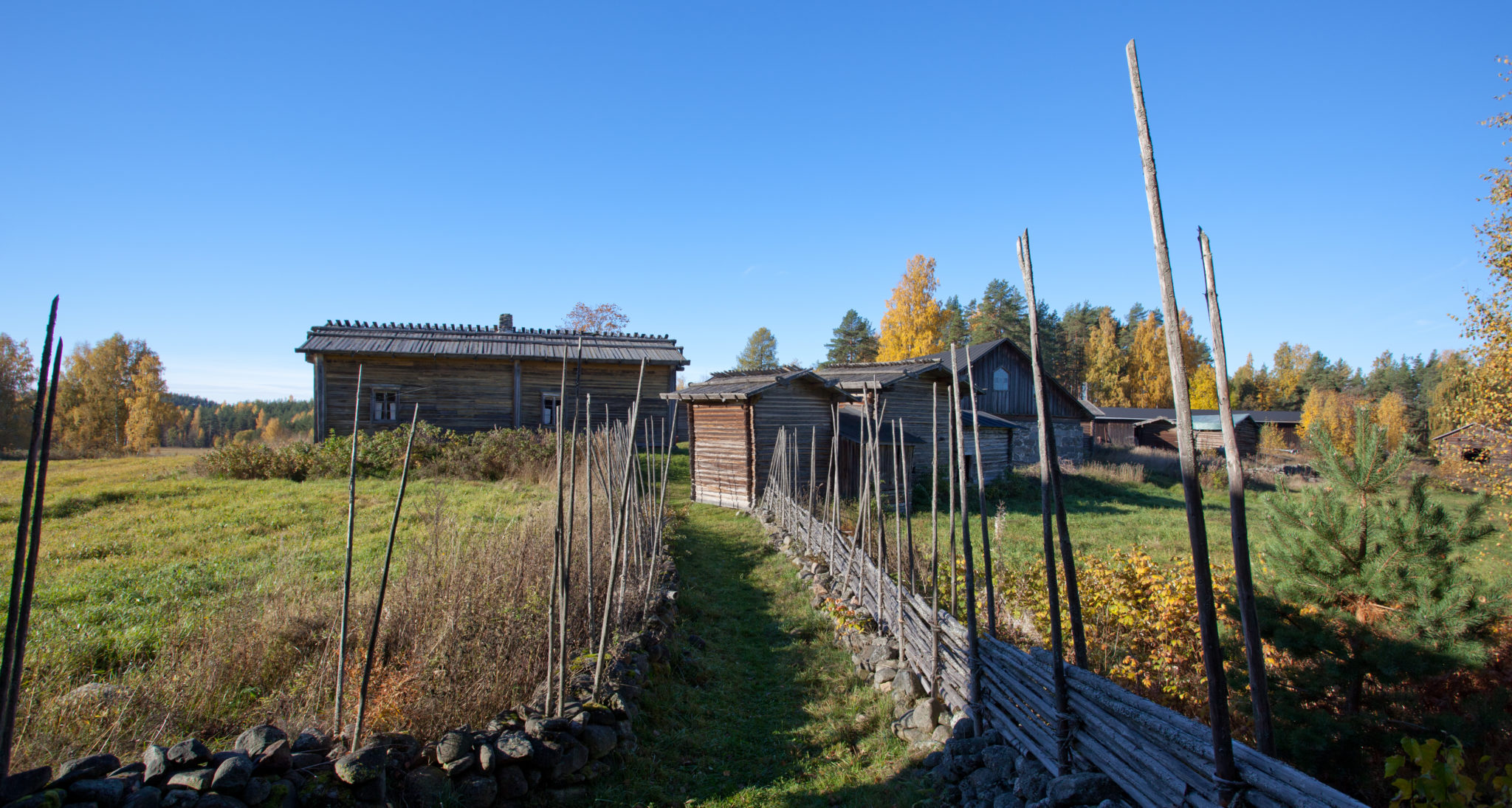Pien-Toijola open air museum
More information about the museum can be found on Visit Mikkeli website (in Finnish).
The buildings in the yard of the Pien-Toijola open air museum are built on rock area consisting of veined gneiss. The rock area is exposed in many places and from them you can search and view special structures of the bedrock, inclusions. They appear on rock surfaces as differently shaped round bodies that have formed in the bedrock formation process more than a billion years ago. The rock type of the bedrock, the veined gneiss, was formed billions of years ago from sand and clay on the ancient seabed. These ancient sediments were transformed into mica gneiss through mountain folding, deep in the Earth’s crust. Partial melting and re-crystallisation occurred during and after the mountain-folding process took place in the mica gneiss. Structures formed through partial melting can be seen in the rock as light granitic stripes and veins. From that stripy appearance becomes the rock type name of veined gneiss. Partial melting and recrystallization also resulted in inclusions of various shapes. The weathered parts of the inclusions contained layers and patches of calcium, carbon and sulphur, which are weaker than the mica gneiss and therefore worn away.
image: Emmi Eronen, 2013, Mikkelin kaupungin museot.
Adress
Suurlahdentie 1982, 52360 Ristiina
